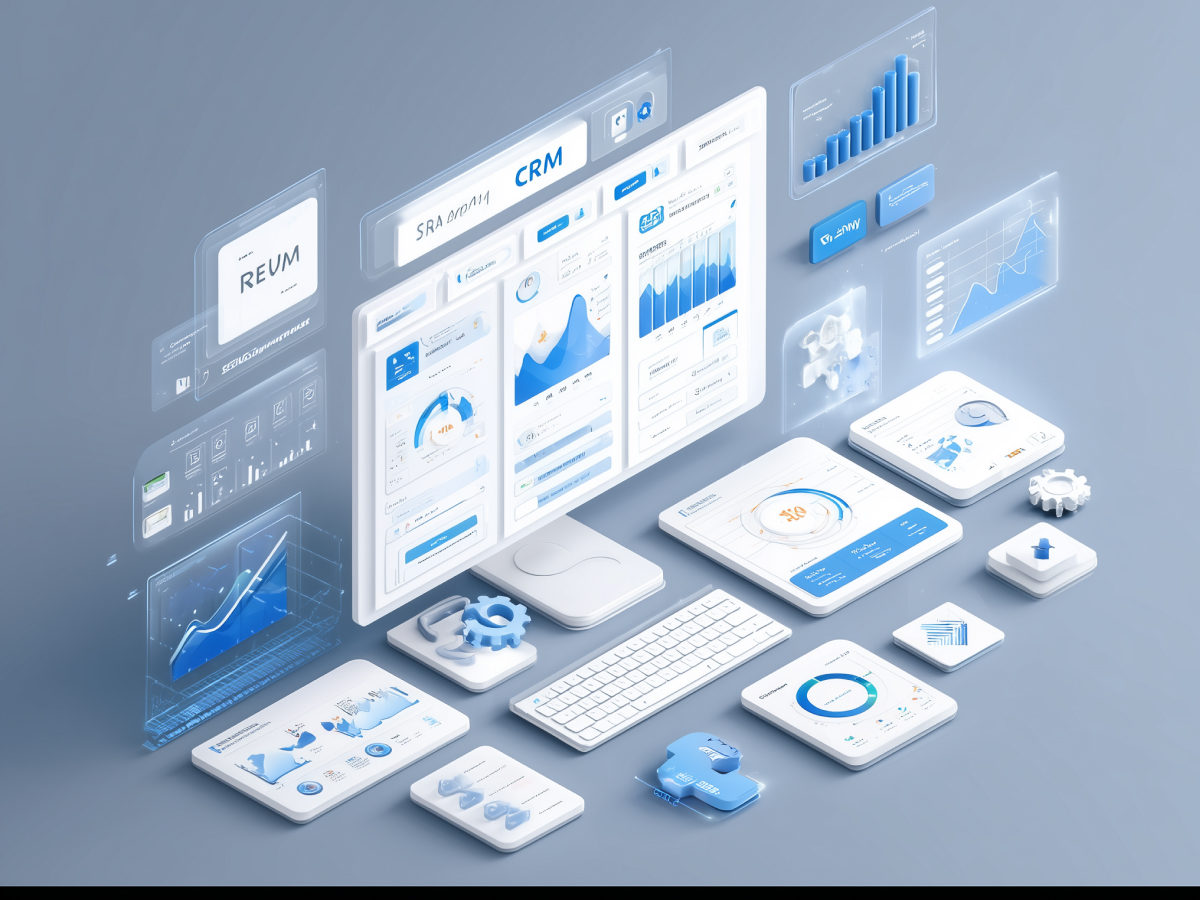Predictive analytics uses historical data to forecast future outcomes
If you’re running a business today and you’re not using predictive analytics, you’re leaving value on the table. This is about making decisions faster and better, based on real signals, not guesswork. Predictive analytics is a process. It digs into historical data, identifies trends, and helps you forecast what’s likely to happen next. We’re talking about smart forecasting, built on math, logic, and massive data sets.
At its core, predictive analytics uses techniques like regression analysis, data mining, and machine learning to find patterns in your data. Those patterns get turned into models that estimate likely future behaviors or events. For your business, this might mean knowing which customers are likely to churn, which loans pose elevated risk, or where your next equipment failure could show up.
What’s powerful is that predictive models aren’t static. They evolve. As new data flows in, machine learning algorithms update their understanding and improve prediction accuracy over time. This means the system gets smarter the more you use it. In practice, this gives executives using predictive analytics a real-time advantage, decisions informed by continuously improving insights. Watch the shift in your outcomes when your choices aren’t just reactive but consistently forward-looking.
Choosing the right model depends on the problem you’re solving
Predictive analytics isn’t a single solution. It’s a toolkit, and results come down to matching the right tool to the right job. Let’s cut through the list and land on the fundamentals. If you’re segmenting your customer base or detecting unusual behaviors, clustering models will get you there. They sort data based on shared traits, helpful when you don’t know the full picture going in.
When timing is crucial, sales cycles, inventory forecasts, demand planning, you’ll work with time series models. These look at how indicators change over time and spot built-in seasonality or trends. These models often use methods like ARIMA or exponential smoothing. We use them in industries where predicting the future isn’t optional, it’s survival.
Then there are classification models. Use them when you need to decide whether something fits into a defined category, fraud or no fraud, renewal or churn, qualified lead or not. They draw on labeled historical data to predict outcomes for new inputs.
Regression models play in a different space. They don’t classify. They predict values, how much of something and when. That’s key when you’re anticipating financial performance, customer spend, or even forecasting growth metrics. Ensemble models take this further by combining several types into one, giving you more accuracy and stability.
And here’s the kicker: simplicity matters. Decision trees, for example, aren’t just intuitive, they scale fast. They help you map business logic to data input clearly. That transparency matters when you’re scaling a team or aligning across divisions.
Making the right call on which model to use starts with defining the problem. You don’t need to complicate it. You need strategic clarity, and the ability to act.
Predictive analytics improves operational performance and strategic precision
Predictive analytics improves the way your business performs. From financial operations to customer engagement, the impact is measurable. When you use past data to shape tomorrow’s actions, you reduce risk, boost margins, and put precision behind every strategic move.
Take finance. Whether you’re managing cash flow, modeling risk scenarios, or setting budgets, predictive analytics gives you directional clarity. You’re not estimating, you’re calculating based on patterns that already exist in your data. Executives can make confident decisions because the input isn’t based on speculation, it’s based on verified history.
In marketing, predictive models refine targeting. When your teams understand buyer preferences and behaviors in advance, messaging becomes relevant and timing becomes efficient. You spend less and convert more. Predictive models can also surface early signs of churn, giving you time to act before you lose the customer. That’s a direct win for CLTV.
Fraud detection gains speed and precision too. Financial services, insurance providers, and eCommerce companies rely on these models to flag unusual data points before the damage happens. That’s higher accuracy, lower risk, and reduced exposure at scale.
At the leadership level, what this all means is simple: you make better decisions fast. Instead of debating what might happen, your team is working off accurate forecasts based on real inputs. This changes the tempo of how the organization reacts, prioritizes, and competes.
Cross-industry use cases demonstrate flexibility and return
The most telling advantage of predictive analytics is that it’s already at work, quietly solving real problems in financial services, marketing, telecom, and manufacturing. These aren’t edge cases. They’re standard practice for firms that lead.
In financial services, institutions use predictive models to highlight fraudulent transaction patterns and assess borrower creditworthiness with accuracy. That feeds directly into loan decisions, approval processes, and portfolio risk management. Data-driven forecasting also supports smarter investment strategy development.
Marketing organizations are transforming customer acquisition and retention using the same tools. Predictive models help flag high-risk churn and highlight ideal conversion candidates. This supports more effective campaign targeting, optimal message timing, and personalized journey design, all of which directly improve ROI.
Telecom operators are using analytics to minimize downtime. These firms track how their networks perform over time and apply predictive models to anticipate potential outages or quality drops. That moves intervention schedules from calendar-based to evidence-based, preserving service quality while managing cost.
Manufacturers have also moved fast. They’re analyzing sensors and maintenance logs to predict which machines are likely to break down, and when. Scheduled maintenance is now based on actual status and historical behavior, reducing costly downtime and avoiding performance surprises.
For executives, the key point is this: predictive analytics doesn’t belong to a single sector. Its strength lies in its adaptability. Whether customer-centric or operational, the value is consistent, faster decisions, lower waste, and stronger outcomes.
Predictive analytics platforms offer scalable options for every business environment
Choosing a predictive analytics platform is a strategic decision. It defines how fast your teams can act on insights, and how well those insights align with your goals. The good news: there are tools built for different levels of technical expertise, deployment preferences, and integration needs. You don’t need to hire a dozen data scientists just to get started. But you do need clarity on capability, scalability, and compatibility with your existing systems.
Platforms like Alteryx are built for accessibility. They allow users to build and deploy predictive models without writing code. This means your analysts and operational leaders, people who understand your business best, can take ownership of data-driven decisions without relying exclusively on engineering teams. With a strong user interface focused on data blending and visual workflows, it closes the gap between insight and action.
Altair RapidMiner goes deeper with over 1,500 native algorithms. It’s designed for more complex use cases and supports integration with multiple data sources across your stack. If you need to operationalize advanced analytics across multiple departments, RapidMiner gives you that scale, with transparency in how models are trained and deployed. The platform also supports automated machine learning (AutoML), enabling faster experimentation and optimization.
Microsoft Azure Machine Learning operates in the cloud, making it well-suited to organizations prioritizing scalability, elasticity, and integration within a broader Microsoft ecosystem. It also offers a visual drag-and-drop interface, eliminating the need to build complex pipelines from scratch. For enterprise-grade companies managing large, distributed data environments, this level of abstraction speeds time-to-value.
Deployment options matter. If your data must remain on-premises for compliance or performance reasons, several of these tools can accommodate. If you’re running on a hybrid or fully cloud infrastructure, integration flexibility is built-in.
For C-suite leaders, the takeaway is clear: the barrier to entry isn’t the tech, it’s the decision to start. Today’s tools are optimized for both speed and alignment, providing a fast track to making smarter, data-informed decisions across your business. Choose the platform that fits not just your technical resources, but your ambition.
Key takeaways for leaders
- Predictive analytics drives smarter, faster decisions: Executives should use predictive analytics to move from reactive responses to proactive planning by leveraging historical data, machine learning, and real-time inputs to anticipate outcomes with increasing accuracy.
- Align models with high-value business problems: Leaders should select predictive models, such as clustering, time series, or classification, based on the specific problem to solve and the type of data available, ensuring precision and relevance in outcomes.
- Use predictive insights to boost financial and operational outcomes: Decision-makers should apply predictive analytics to improve forecasting, customer targeting, and fraud detection, resulting in stronger margins, reduced risk, and a faster path to ROI.
- Capitalize on proven use cases across industries: Organizations in finance, marketing, telecom, and manufacturing are already using predictive analytics to reduce churn, prevent system failures, and enhance performance, leaders should follow suit to stay competitive.
- Choose scalable tools that match team capabilities: Executives should invest in predictive platforms like Alteryx, RapidMiner, or Azure ML based on technical skill sets, data infrastructure, and deployment needs to ensure fast adoption and long-term value.





